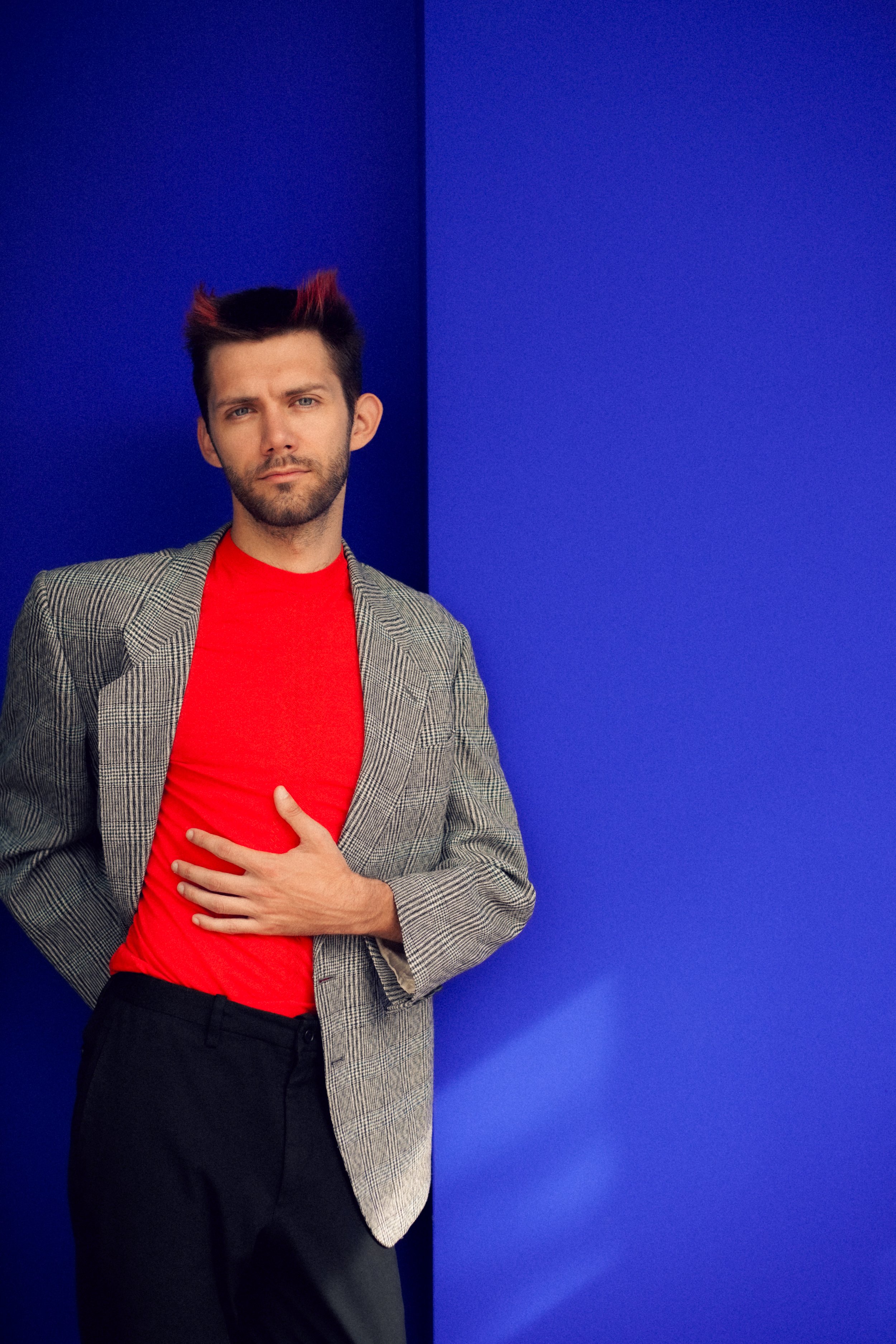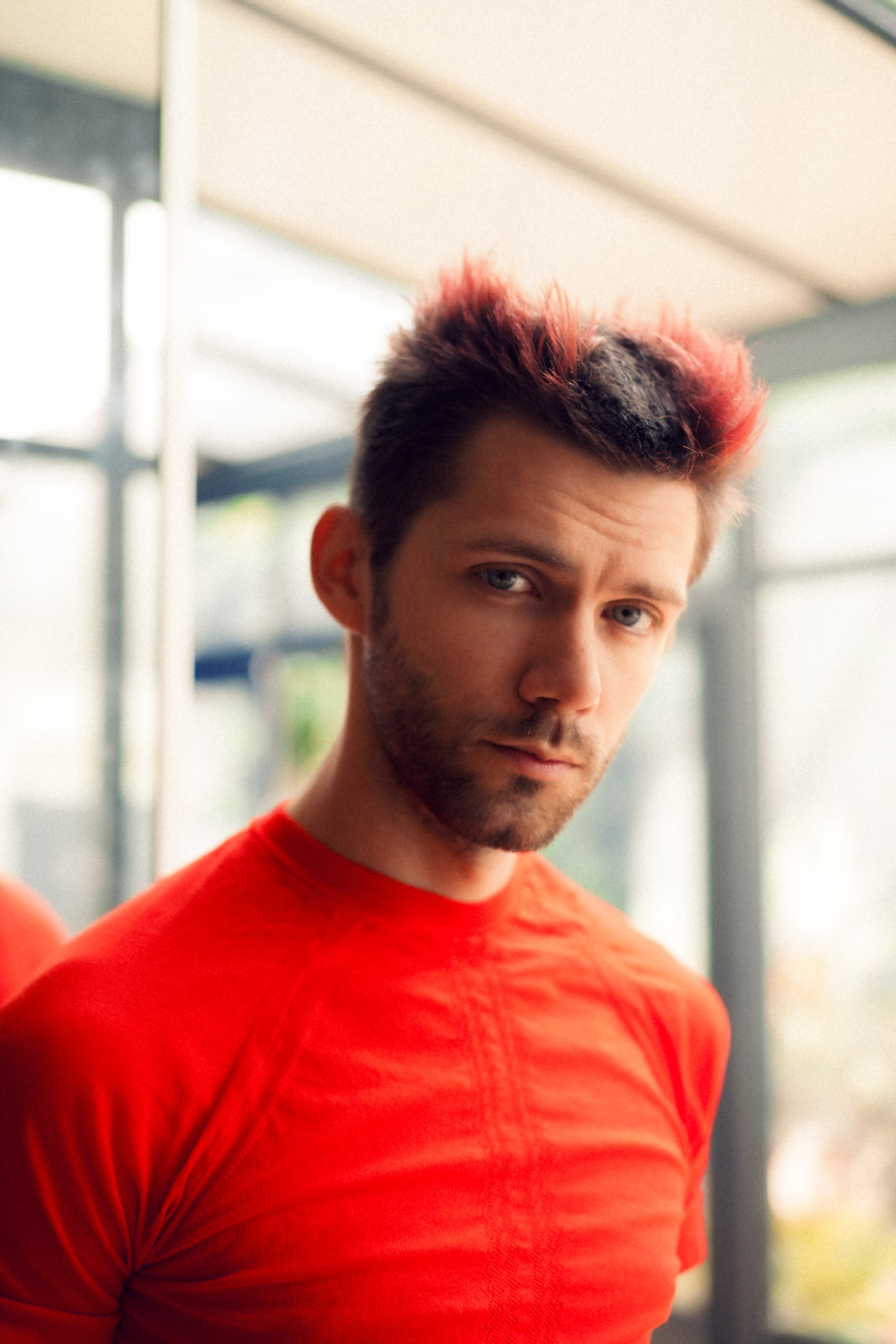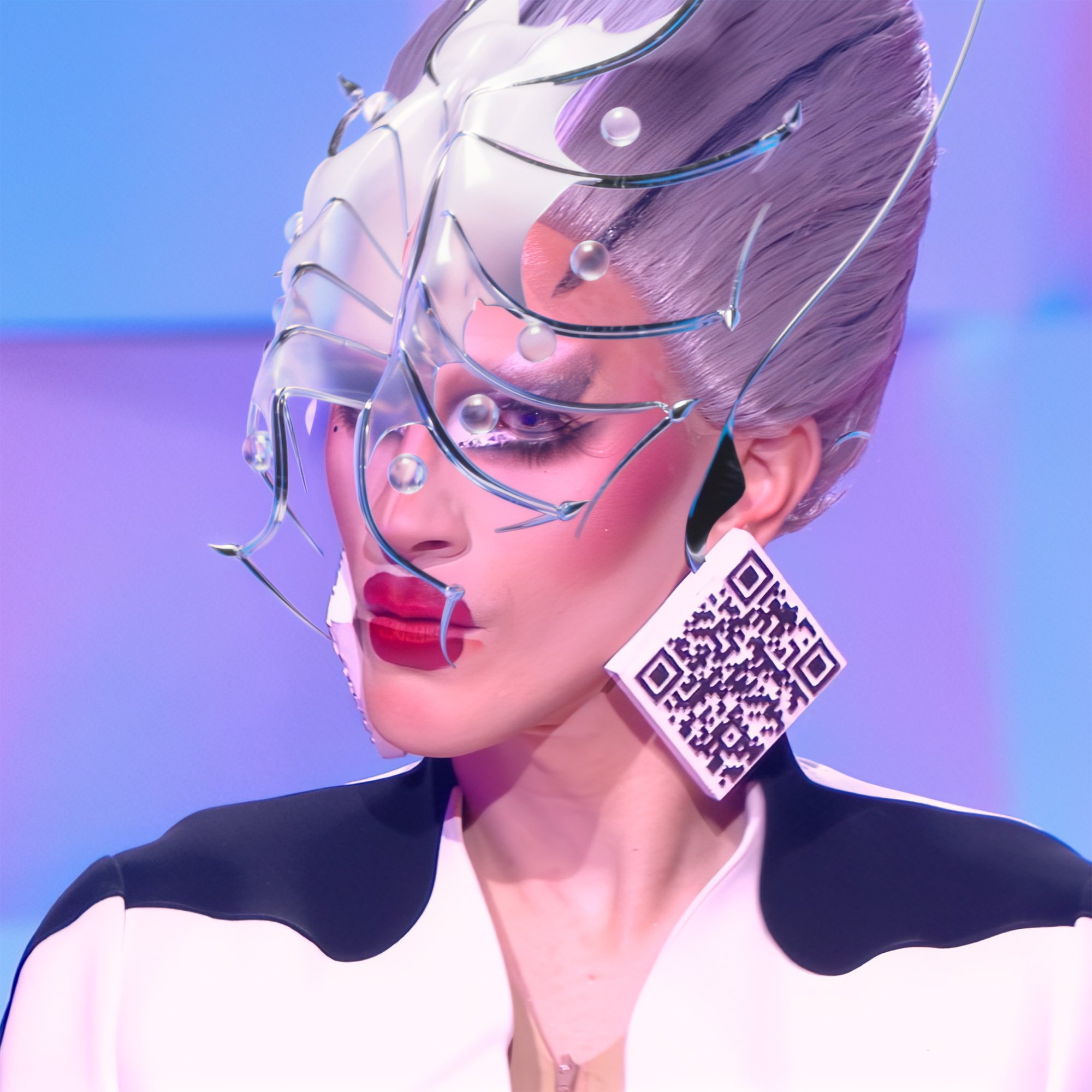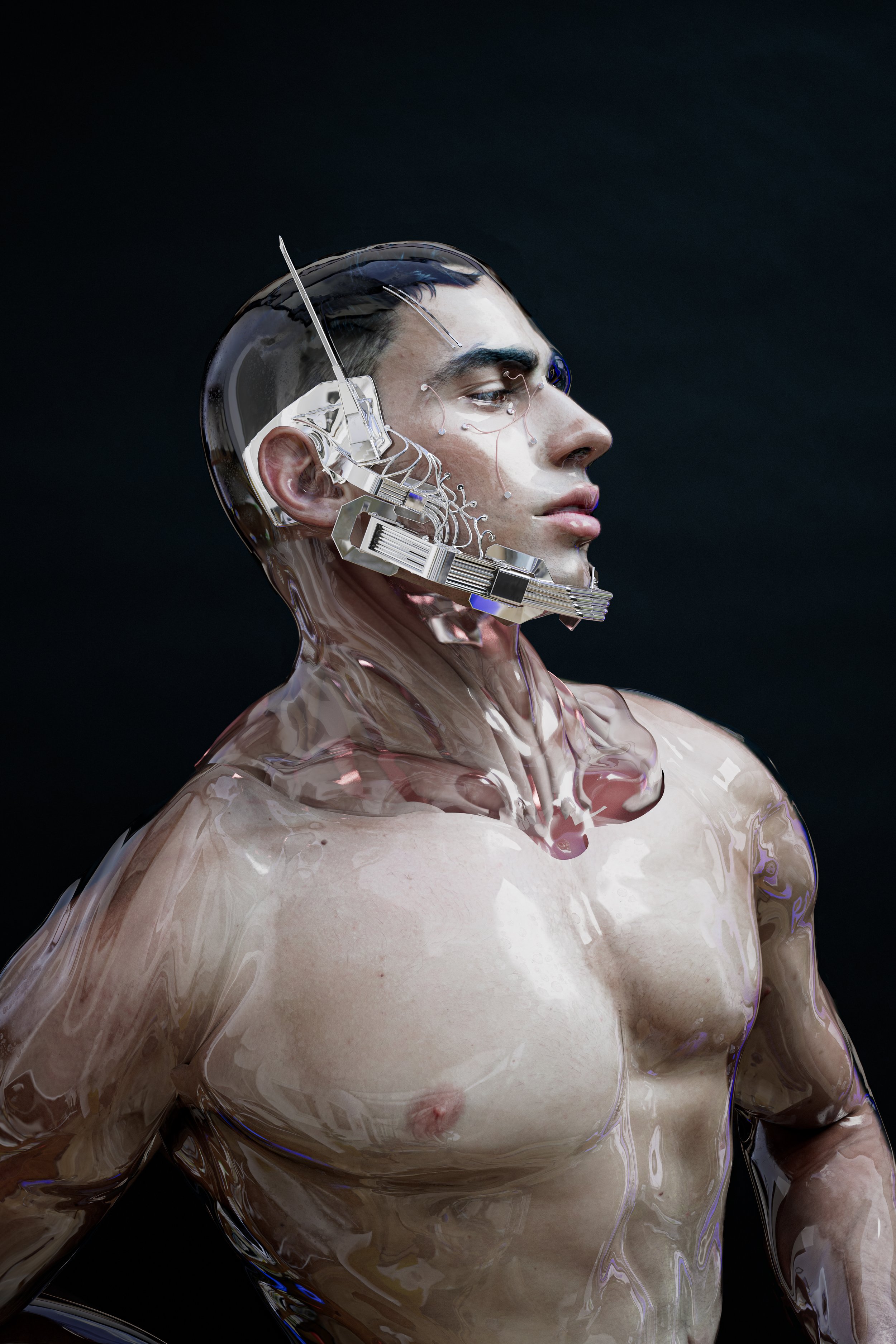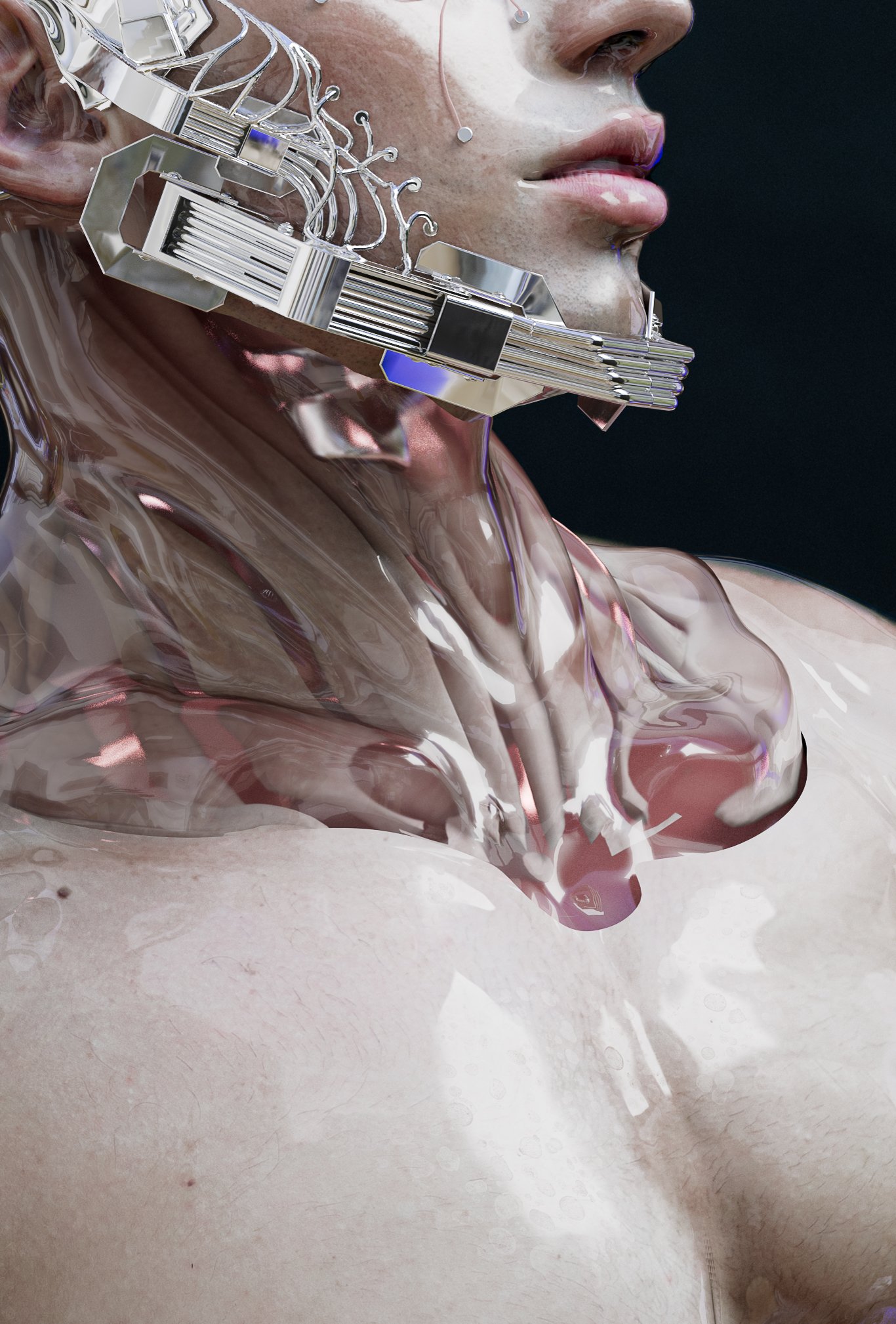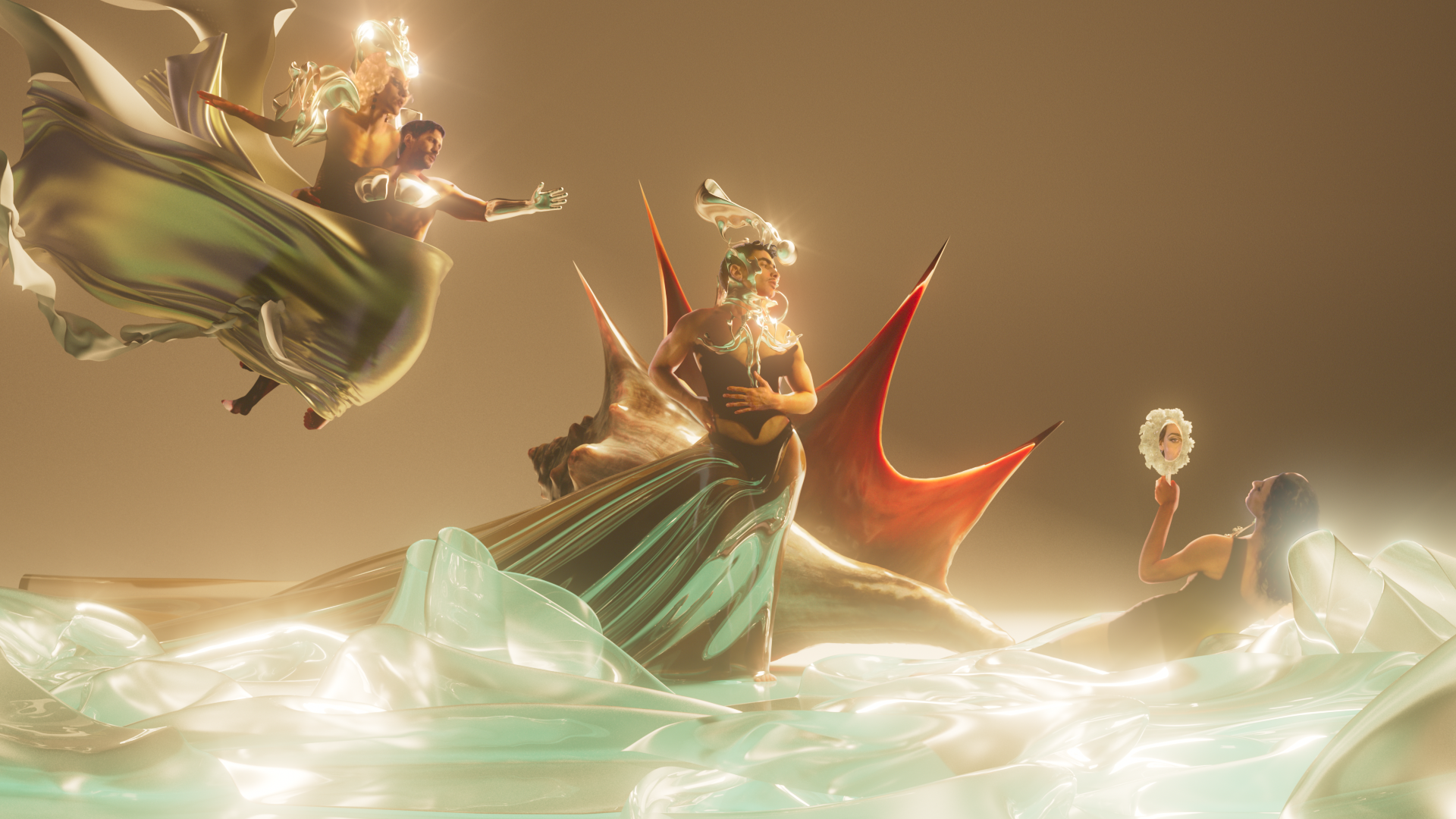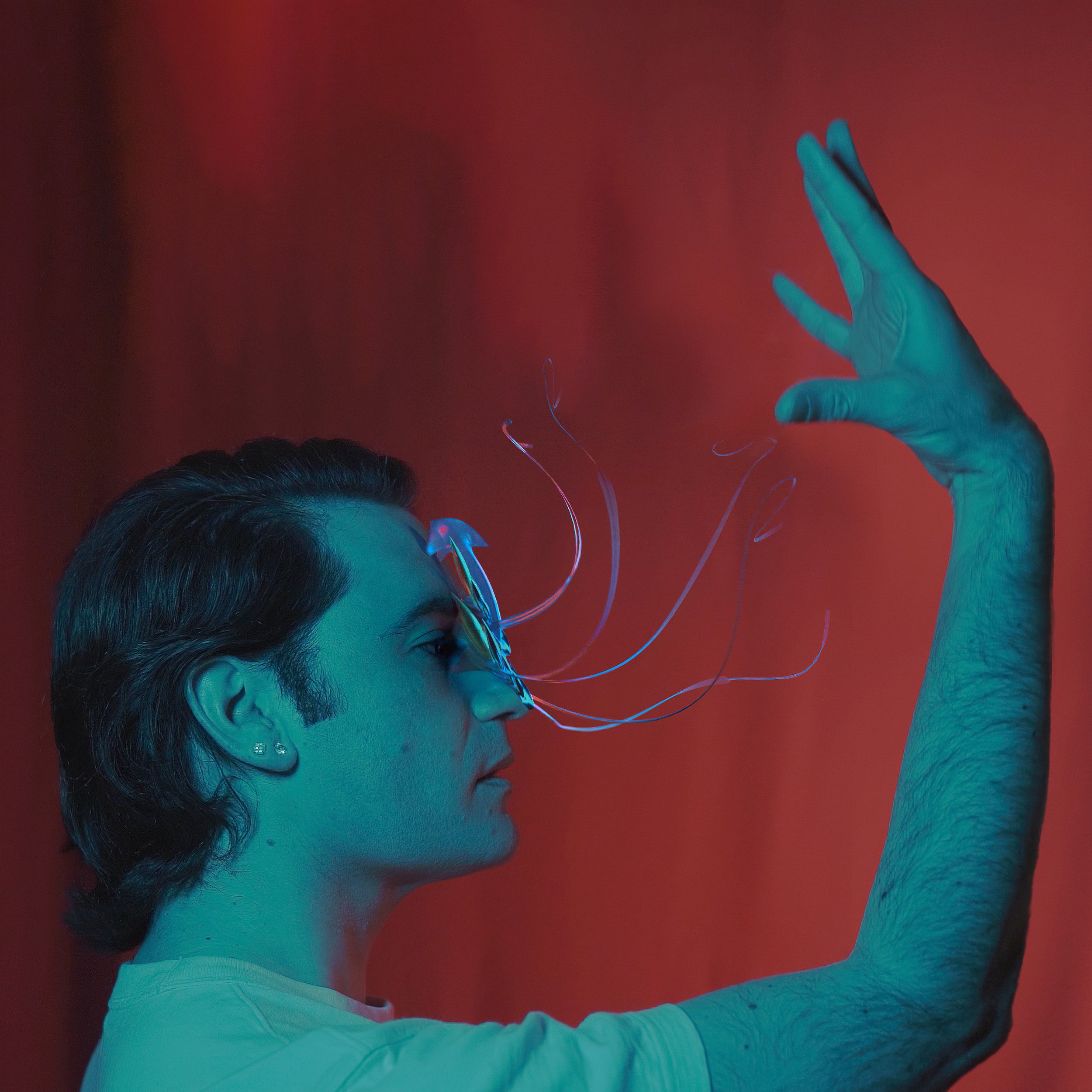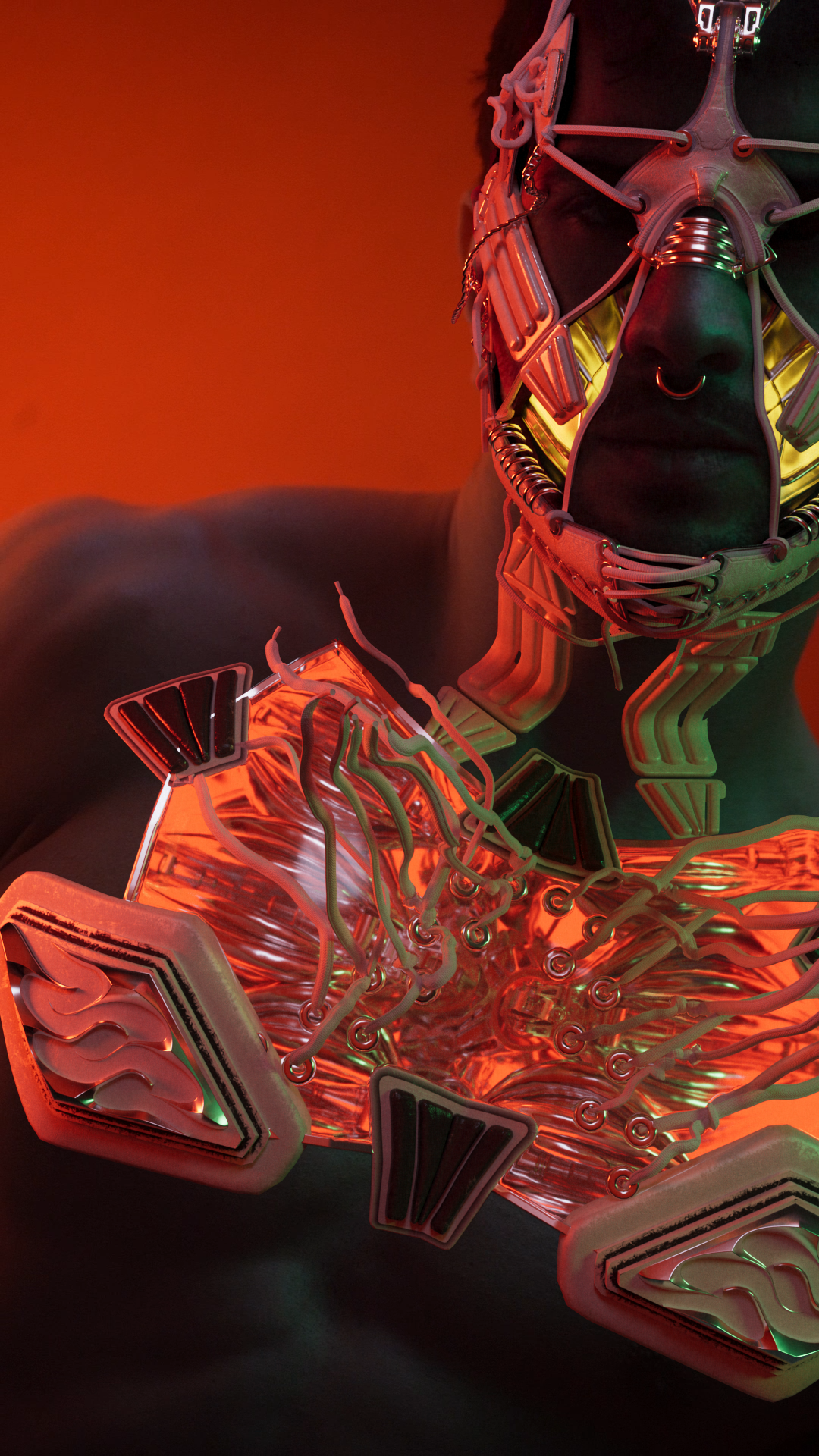romain gauthier
interview
september 25, 2023
interview cyril vinchon — translation cathy gastellu
For a long time, the physical and digital worlds have been considered as two separate realms. Thanks to Romain Gauthier, a new reality has emerged at the crossroads of these two universes that are diametrically opposed—or are they?
Who is Romain Gauthier?
I’m a Paris-based visual artist. My work is midway between the virtual world and physical reality. It explores fashion and digital identities. I like to question perceptions of the body and create hybrid identities in which elegance and queer identities mingle in a waltz of pixels and passion.
Describe yourself in three words.
Artist. Explorer. Nerd.
What exactly does questioning beauty and extending an individual’s identity through digital technologies mean for you?
We simultaneously exist between the physical and virtual worlds. I express myself on a daily basis as Romain Gauthier in my ‘actual’ life, but I also express myself (more) every day on the social networks or on any other digital entity. I consider that there are many ways of building your identity in the real world, through your overall appearance and the way you move and express yourself. In the digital world however, I’d say that we try to imitate reality without ever trying to transcend it. My artistic standpoint is the re-transcription of a fantasy. It’s a wager in terms of trying to visually bring human existence into less well-established areas in which digital technologies are no longer tools used to camouflage imperfections, but rather to reveal a consciously-assumed identity. It’s a steroid-pumped Instagram filter which, instead of giving you unblemished skin, will make you an android for the day.
That’s when it becomes interesting to see where I can take the human body which, in the virtual world, does not have its own anatomical functions, and when it comes to fashion, it’s not subject to any physical issues. In the end, it’s a space full of new challenges, that I find extremely inspiring.
Your work seems to focus on the body, and the symbiosis between the digital and natural worlds. Is it because of a desire to blur the lines between the real and virtual worlds so that they become one?
I wouldn’t say that I want to blur the lines—it’s more like the lines don’t actually exist. That statement carries far more weight, because it evokes the notion of dialogue between the two spaces which, in the end, are not separate. Physical and digital spaces share the same reality. For example, I love the idea of saying to myself that an object can exist in a physical space and be augmented by digital technologies, like a natural extension. This concept can be applied to anything and everything, and that’s what I’m trying to do through my experiments with 3D-printing for example, or through the production of films using computer-generated images.
Do you remember when you first became interested in the digital world?
I belong to the first generation to grow up with the internet and the development of digital tools. I’ve spent hours on forums, skyblogs and video games, so it runs in my veins. My relation to images has always been a window on/invitation to dream, since I discovered that we could transcend reality and the daily grind. In that sense, I’d say that very early on the first disturbing images I saw were doubtless Hollywood films like Star Wars and Jurassic Park.
You’re perhaps the first designer to propose a scannable accessory to complete an outfit on a runway—and not just any runway either—it was for Punani on Drag Race France. Is pulling off something that amazing, a trend that we are—or should be—working toward?
Well to start with, I’m really grateful to, and full of admiration for Punani, for having trusted me in pulling off this digital bet, and I’m delighted that we were able to introduce that concept together. To be honest, I don’t think there was any better place to explore that kind of idea. The magic of drag and Drag Race, is that it’s always an open arena for experimentation and questioning what fashion actually is. To the best of my knowledge, proposing a virtual accessory as the final touch to a look has never been done, and it’s typically in this kind of context that a small designer like me has the chance to put the question to a larger audience.
As for me, I think that when it’s appropriate, it’s something new that is worth looking into. The concept we introduced could be taken a whole lot further: creating clothes, broadcasting them digitally on television—why not? Anything is possible! In any case, I think that it’s just another parallel avenue to explore. Digital fashion is not designed to ‘supplant’ physical fashion.
How do you see the fashion of the future?
I’d love for the fashion of the future to be multi-platform. A piece of clothing will never be replaced, but giving it a digital existence is no longer the realm of science-fiction. We’re starting to see attempts from labels who are experimenting with both the skins of video games and on the social networks. For now, it’s simply marketing limited by technology, but once new technologies become the focus of designers’ creative thought process, we’ll definitely start seeing new ideas emerging, and new shapes that will complete the definition of “fashion”. In any case, I’ll be intrigued to see what gives.
Your work was displayed at Palais Augmenté 3 and in the International photo festival in Arles and Amsterdam. Isn’t this inverse extension of your digital work in physical spaces rather contradictory? Does it make you want to take your ideas further?
Oh, quite the opposite, it’s complementary! I’m not trying to flee the real world—it stimulates many more of our senses. The materials, light and sounds that make a space come alive are just new possibilities to play with. The exhibition opportunities were just new ways of completing the digital part of my work. I’d say in the end that it was crucial to create facilities, because they anchor both universes in the spectator’s reality. In that sense, the interactive aspect of a facility like the Palais Augmenté 3, was a wonderful invitation to explore that reality, by encouraging visitors to play with physical windows on a digital world.
What does it feel like to see a 3D design come to life?
Just like any form of design, it’s really exciting—at many stages in the process. I see 3D as a meticulous universe which, in addition to an artistic vision, requires a lot of technical knowledge. Hours and hours of work are poured into the foundations of an idea that will be totally invisible on the final result. What’s fantastic is that there are many steps that are small success in themselves, in the process of creating the final shape. If I create a fashion accessory for example, from the sketch to the first sculpt, looking for materials, the first images, from animation to perhaps printing to switch it into reality, it’s totally enthralling.
A motto?
“There is no spoon.”


